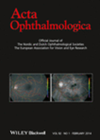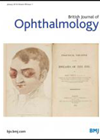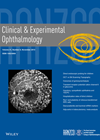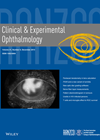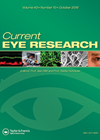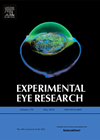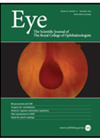Retinopathy of prematurity
This review article describes the pathophysiology of retinopathy of prematurity (ROP). The authors start by introducing the condition and its incidence. There is extensive information on the pathophysiology mechanisms involved in the condition to include normal and pathological retinal development....
Exudative age-related macular degeneration
The authors looked at macular lesions in eyes with newly diagnosed exudative age-related macular degeneration. The eyes of 23 patients were included and tested for visual acuity, contrast sensitivity, microperimetry, optical coherence tomography (OCT) and fluorescein and indocyanine green angiography....
DISC lens slow myopia progression in Hong Kong Chinese schoolchildren
This is a prospective double-blind randomised trial between September 2007 and October 2009. It included 221 children aged 8-13 years, with myopia between -1 and -5 Dioptres ≤1.00D. There were 111 patients in the defocus incorporated soft contact DISC group...
Intracameral bevacizumab as an adjunct to trabeculectomy
This is a 12-month, prospective, randomised, double-masked, placebo-controlled trial of patients who were not controlled medically with open angle glaucoma and scheduled for a primary trabeculectomy. Patients were recruited and randomised during the period between April 2009 and November 2010....
Direct endoscopic probing for congenital lacrimal duct obstruction
The most common treatment for congenital lacrimal duct obstruction (CLDO) is probing, which is traditionally a blind procedure. Previous literature reports success rates between 78-92%. The authors of this retrospective non comparative case series reviewed the success rates of probing...
PERG as a visual prognosticator in chiasmatic tumours
Pattern electroretinogram (PERG) allows assessment of ganglion cell function and may therefore be used to assess anterior visual pathway dysfunction. This prospective non-randomised study assessed PERG before and after surgical removal of tumours in and around the sellar region compressing...
Macular slippage following macular hole surgery
The treatment of macular holes now involves peeling the internal limiting membrane (ILM) as well as vitrectomy and gas tamponade. It has been noted in previous studies that following an ILM peel the morphology of the macula is different. Tadayoni...
A relationship between central serous retinopathy and obstructive sleep apnoea
This prospective study aimed to evaluate a relationship between central serous retinopathy (CSR) and obstructive sleep apnoea (OSA). Twenty-three subjects (six female and 17 male) were diagnosed with CSR and overnight polysonography was performed to record desaturation and apnoeic episodes....
New mouse model of diabetes mellitus
Diabetic retinopathy (DR) is a serious complication of diabetes. It is driven by the loss of pericytes, cells which control vascular function, due to excess formation of sugar alcohols by the enzyme aldose reductase (AR). AR has been shown to...
Autophagy in lens mitochondria loss
The lens consists of a monolayer of epithelial cells that overlies fibre cells that differentiate from epithelial cells at the equator. While developing, fibre cells need mitochondria to provide energy, as they mature they lose these and other organelles to...
Long-term outcomes following surgery for traumatic cyclodialysis clefts
This retrospective case series evaluated the long-term visual prognosis and intraocular pressure control following surgical treatment of traumatic cyclodialysis clefts. Cyclodialysis clefts result from the disinsertion of the longitudinal ciliary muscle fibres from the scleral spur and occur as a...
Pain score assessment in babies undergoing treatment for ROP
The aim of this study was to assess neonatal pain scores during laser treatment for retinopathy of prematurity (ROP) under sub-tenon anaesthetic with oral or rectal sedation. Sixty-two babies were included who have had ROP laser treatment over a seven...


